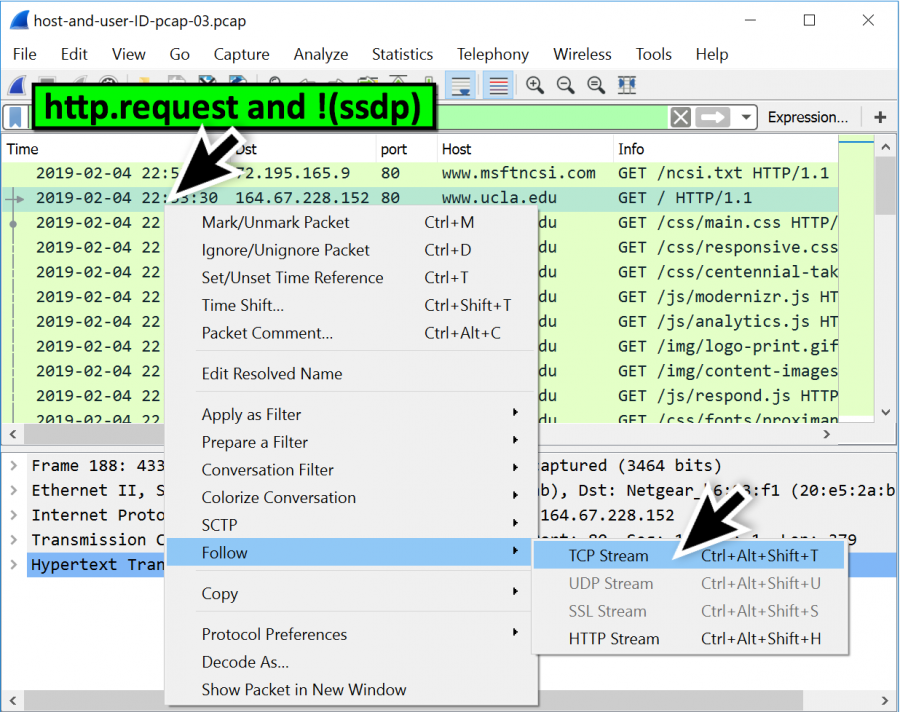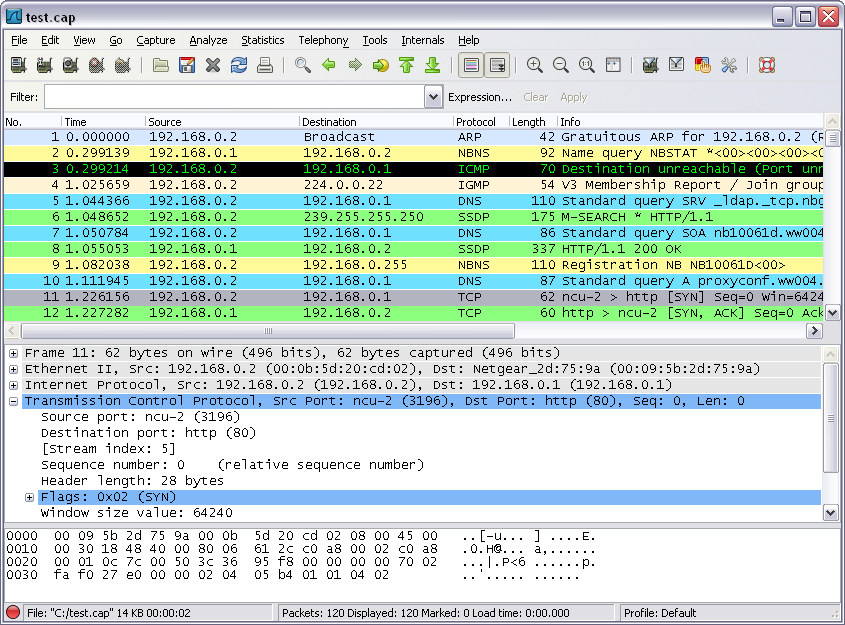

- WIRESHARK FILTER HTTP PROTOCOL HOW TO
- WIRESHARK FILTER HTTP PROTOCOL MAC
- WIRESHARK FILTER HTTP PROTOCOL WINDOWS

For a complete list of possible filters, refer to the official Wireshark Capture and Display filters page. On top of all of the filters we’ve look at so far, here are a few more useful ones. You can capture all such traffic that runs over your network with a specific address or from multiple clients: ip.addr = 192.168.0 and (http or ftp or messenger or pop) This says show all the traffic generated or directed to the IP address 192.168.0.1 and display only http or ftp or pop or messenger packets. In the filter box, enter: ip.addr = 192.168.0.1 and (http or ftp or messenger or pop) Now suppose you want to capture all traffic using specific protocols generated by a host, such as pop3, ftp, http, or messenger. Instead of the ip.addr filter you can use the capture filter “Host” in this way: host 192.168.0.1īy entering this setting as a capturing filter, Wireshark captures all traffic to and from 192.168.0.1, regardless of the type. With the option “ip” selected, all Internet Protocol traffic is shown, which is fine in the 99% of cases.
WIRESHARK FILTER HTTP PROTOCOL MAC
Then run the arp command:Ĭlick apply, and you will see only the traffic that is coming from, or going to, that IP or MAC address. To get the mac-address of the target on the other end of the connection, first issue a ping command to the hostname or URL of the target computer to learn its IP address.

You could filter for mac-address to be sure to pinpoint the right client. Now suppose you want to see all the traffic coming in and out of one specific computers. You can also isolate only requests toward a specific site – Facebook, for example – to see which IP addresses are requesting it, by placing the filter contains facebook in the Filter field.
WIRESHARK FILTER HTTP PROTOCOL WINDOWS
To do that, choose an http request in the main windows where you see all the packets, right-click on it, and choose the option “Follow TCP Stream.” Wireshark will open a new window containing the reconstruction of that entire HTTP session in chronological order. Perhaps you are interested in following a particular kind of information, or a particular user. Each web page that any users on your network visits will generate this kind of traffic for you to catch – which may be a lot of information. You can click on Edit -> Preferences -> Protocols -> HTTP and verify that “Uncompress entity bodies” is checked.ĭuring the capture, set a filter to show only HTTP traffic by entering http. Today, most HTTP traffic is compressed to speed up the exchange of information, so by default Wireshark decompresses the body part of HTTP packets. As before, start Wireshark and start capturing the traffic from the interface that goes out. Here’s another classic example – an HTTP session.
WIRESHARK FILTER HTTP PROTOCOL HOW TO
In this article we’ll see how apply BPF filters to wireshark to show the details of an HTTP session, an e-mail session and how to monitor who is visiting a certain site from our local network.įinally I will make a summary of the most useful filters to use with Wireshark. This is an article of mine, first published on Wazi


 0 kommentar(er)
0 kommentar(er)
